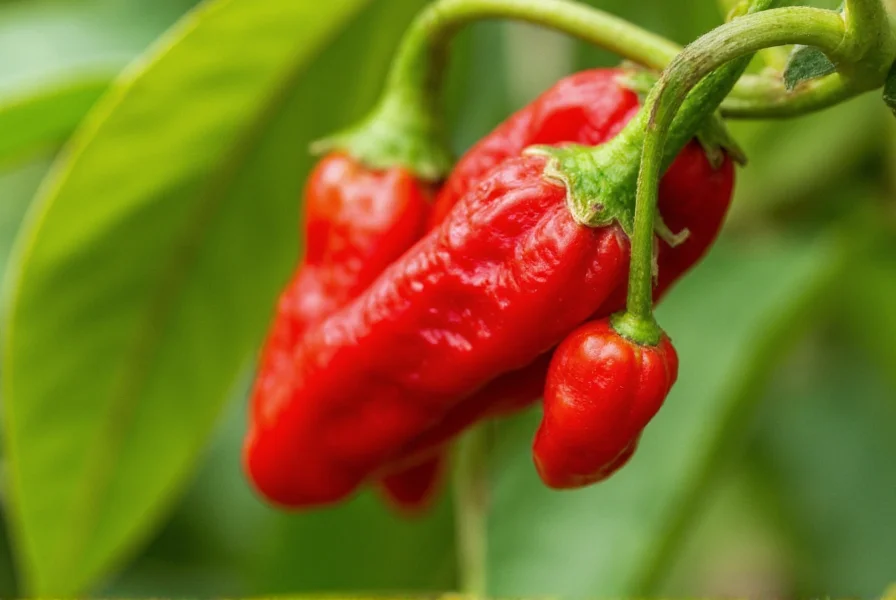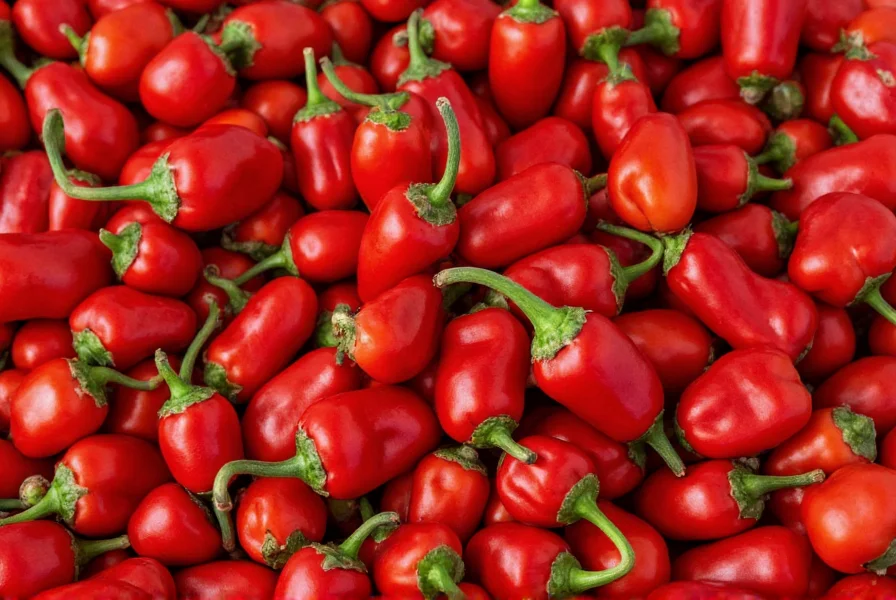For chili enthusiasts seeking extreme heat experiences, Pepper Madness represents one of the most intense cultivated pepper varieties available today. This superhot chili, scientifically classified as Capsicum chinense, delivers not just formidable heat but also a complex flavor profile that distinguishes it from other ultra-hot peppers. Understanding its characteristics, proper handling techniques, and cultivation requirements is essential for anyone considering growing or using this formidable pepper.
Understanding Pepper Madness Characteristics
Pepper Madness plants typically grow 3-4 feet tall with a bushy, productive structure. The fruits start green and mature through yellow and orange stages before reaching their final vibrant red color at full maturity. Each pod averages 1.5-2 inches in length with a distinctive wrinkled, bumpy texture and a characteristic tapered shape ending in a small point.
What truly sets Pepper Madness apart is its extraordinary heat level. With Scoville ratings consistently measuring between 1.2-1.5 million units, it surpasses the habanero (100,000-350,000 SHU) by more than four times. For context, consider this heat comparison:
| Pepper Variety | Scoville Heat Units | Heat Comparison |
|---|---|---|
| Pepper Madness | 1,200,000-1,500,000 | 4-5x hotter than habanero |
| Carolina Reaper | 1,400,000-2,200,000 | Slightly hotter on average |
| Ghost Pepper | 800,000-1,000,000 | Noticeably milder |
| Habanero | 100,000-350,000 | 4-12x milder |
Flavor Profile Beyond the Heat
Despite its formidable heat rating, Pepper Madness offers more than just burn. It features a complex flavor profile with initial fruity, tropical notes reminiscent of mango and citrus, followed by subtle smoky undertones. This flavor complexity makes it valuable for specialty hot sauces where the heat is balanced with distinctive taste elements. The heat builds gradually, reaching peak intensity after 1-2 minutes, and can last for 20-45 minutes depending on individual tolerance.
Cultivation Requirements for Growing Pepper Madness
Successfully growing Pepper Madness requires specific conditions that mimic its tropical origins. These peppers need:
- 85-90°F (29-32°C) daytime temperatures with 70-75°F (21-24°C) nights
- 12-14 hours of direct sunlight or equivalent grow light exposure
- Well-draining, slightly acidic soil (pH 6.0-6.8) rich in organic matter
- Consistent moisture without waterlogging (peppers hate "wet feet")
- 85-100 days to maturity from transplanting
Gardeners in cooler climates should start seeds indoors 8-10 weeks before the last frost date. Using a heat mat to maintain soil temperature at 80-85°F significantly improves germination rates, which can be challenging with superhot varieties. The plants benefit from balanced organic fertilizers with higher phosphorus content during flowering and fruiting stages.

Safe Handling Practices for Superhot Peppers
Working with Pepper Madness requires serious safety precautions due to its extreme capsaicin concentration. Always follow these safety guidelines:
- Wear nitrile gloves (latex won't protect against capsaicin)
- Use safety goggles to prevent accidental eye contact
- Avoid touching your face, especially eyes and nose
- Work in a well-ventilated area or use a fume hood
- Clean all surfaces and tools with soapy water after handling
- Store peppers away from children and pets
If you experience capsaicin exposure, use milk, yogurt, or other dairy products to neutralize the burn—water will spread the oil rather than remove it. For skin exposure, a mixture of baking soda and water can help draw out the capsaicin.
Culinary Applications and Recipe Considerations
Due to its extreme heat, Pepper Madness requires careful incorporation into recipes. Chefs typically use it in minute quantities for specialty hot sauces, infused oils, or as a finishing accent rather than a primary ingredient. When cooking with Pepper Madness:
- Start with 1/16th of a pepper for a quart of sauce
- Remove seeds and membranes where most capsaicin concentrates
- Always taste test incrementally—heat builds over time
- Balance with acidic ingredients like citrus or vinegar
- Pair with sweet elements to create complex flavor profiles
Many professional hot sauce makers use Pepper Madness as a "heat booster" in combination with milder peppers to achieve both flavor complexity and extreme heat levels. Its fruity undertones make it particularly suitable for tropical-inspired hot sauces featuring mango, pineapple, or citrus elements.
Where to Source Pepper Madness Seeds and Plants
Due to its specialized nature, Pepper Madness isn't typically available at standard garden centers. Reputable sources include:
- Specialty chili seed companies with verified genetics
- Reputable online seed exchanges with customer reviews
- Chili enthusiast forums and communities
- Local chili growing clubs and associations
When purchasing seeds, look for sellers who provide germination rates and growing instructions specific to superhot varieties. Be wary of exaggerated heat claims—reputable sellers provide realistic Scoville ranges based on laboratory testing rather than speculative maximums.
Responsible Consumption Guidelines
Consuming Pepper Madness requires understanding your personal heat tolerance. Never participate in extreme eating challenges without proper preparation. Start with minuscule amounts (less than 1/8th of a small pepper) and have dairy products readily available. Individuals with gastrointestinal conditions, heart problems, or sensitivity to capsaicin should avoid superhot peppers entirely. The intense heat can cause temporary but severe physical reactions including sweating, shaking, and difficulty breathing.
Final Considerations for Pepper Madness Enthusiasts
Pepper Madness represents the cutting edge of superhot pepper breeding, offering both extraordinary heat and surprising flavor complexity. Whether you're a home gardener, hot sauce maker, or chili enthusiast, approaching this pepper with respect for its potency while appreciating its culinary potential creates the most rewarding experience. Remember that successful cultivation and use of Pepper Madness depends on understanding its specific requirements, implementing proper safety measures, and respecting its formidable heat profile. With careful handling and thoughtful application, this remarkable pepper can elevate your culinary creations to new heights while providing the intense heat experience that chili aficionados seek.











 浙公网安备
33010002000092号
浙公网安备
33010002000092号 浙B2-20120091-4
浙B2-20120091-4